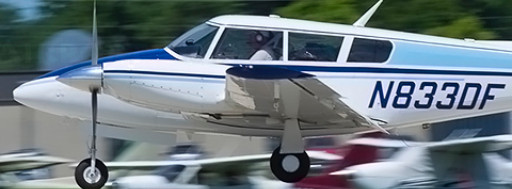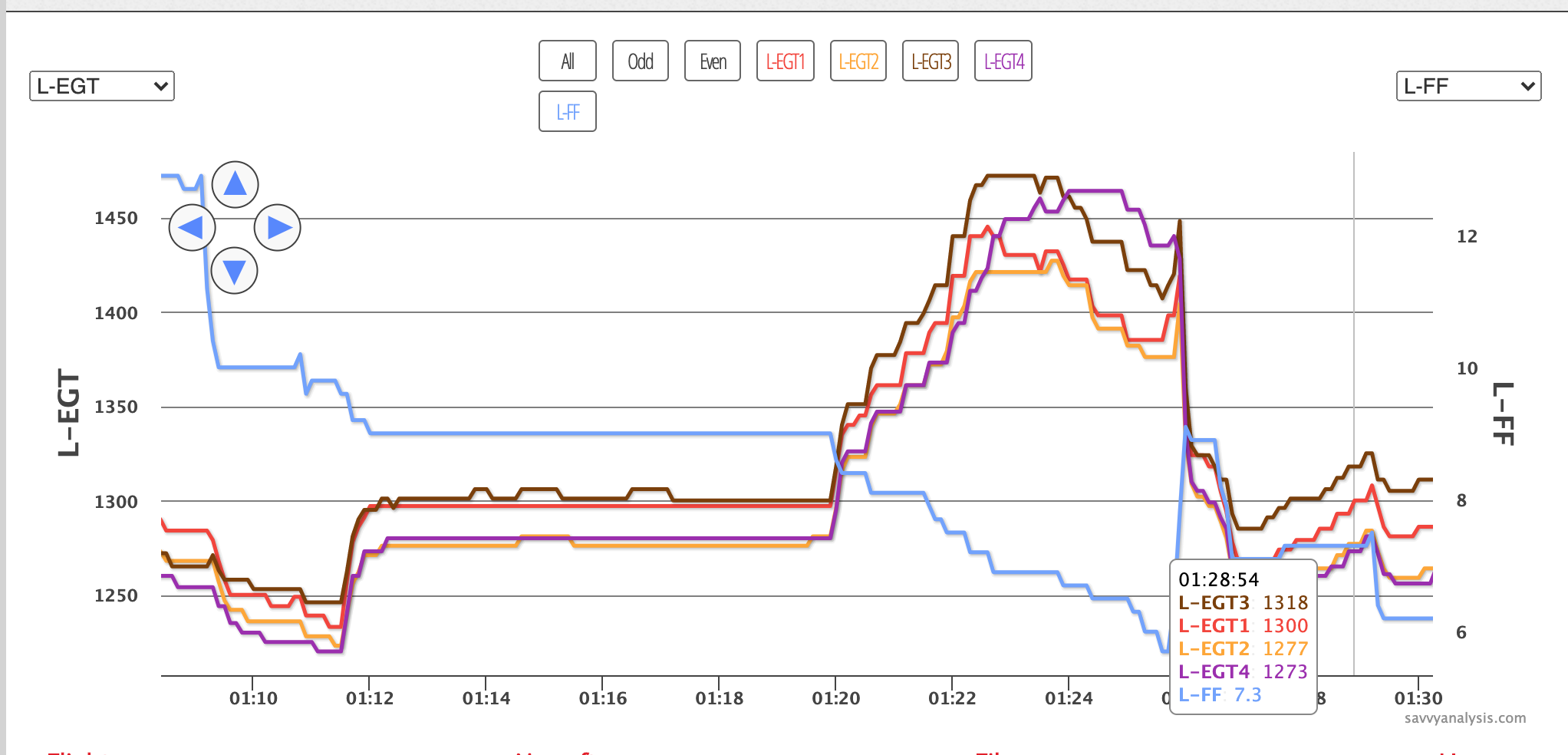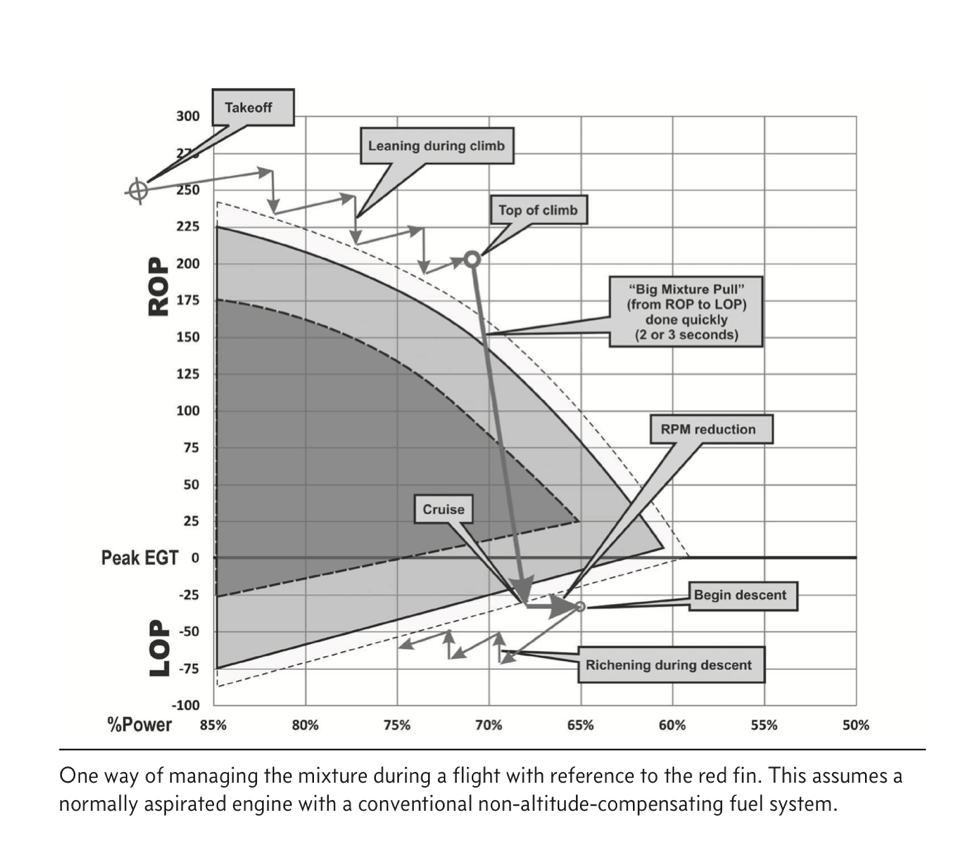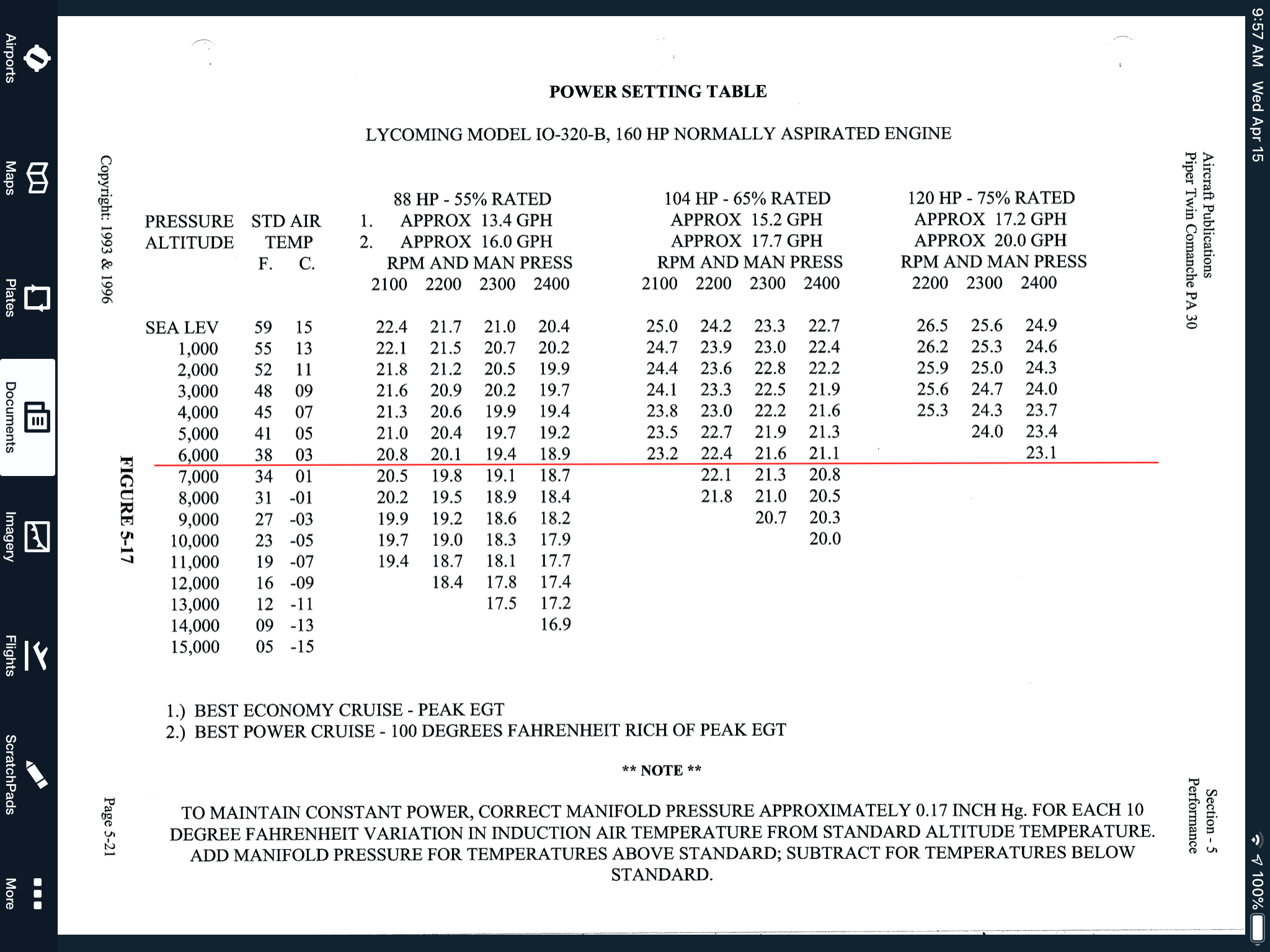I heard from JPI regarding my replacement temperature probes. I am a bit disappointed that they didn’t run to the mailbox and send out new probes. Instead, they asked me to send them the POs and Invoices and questioned how long I’ve owned them. That made me go back to my A&P and have them do that research for me, which adds times. I gave JPI some lip that they should be able to look that up on their own and not be giving me homework. So far JPI is giving me attitude rather than support.
Reviewing the last GAMI test to harvest more data is fascinating. What the heck did I do without an engine monitor? What was I thinking? Then again – you don’t know what you don’t know.
Here are some interesting tidbits from the left engine I’ve observed that will help set up the next test. It is generally the same for the right side.
- Cylinders #1 and #3 peak simultaneously and the fuel flow spread was 0.7 gph
- 8.4 gph will yield 100o ROP at 65% power in this run
- LOP operation: 6.3 gph will get me on the LOP side where all cylinders have peaked and have EGTs declining as we get leaner. This would have been 10o LOP on this test, but Mike Busch doesn’t care where the peak is. CHTs are what matters, and those are all less than 380 in this scenario. Cylinder #4 was the hottest, but I suspect we’ll be more golden there now.
The next Test: I wanted to fly after work today, but have since seen that the weather south of us will not be all that great. I’ll wait a bit and do a flight down to Norfolk with a stop on the way back at Georgetown for gas. I’m looking forward to gathering some good intel on how best to operate these engines for allot of flying I have planned in July. I will not be operating LOP operations for this oil change, but I’ll gather data to get ready. Paul suggests I keep it ROP for another 50 hours.
N833DF Test Profile
- Climb to 6000′
- Lean as necessary on the way up to maintain 400o F on all cylinders
- Reaching 6000′ in level cruise, note the OAT against 38o C standard. Plan on adjusting MP (see below for details)
- Set power 24 squared, close cowl flaps, lean to 400o F and note the fuel flow
- Set power 23 squared, closed cowl flaps, lean to 400o F and note the fuel flow
Note: Leave the mixture there as a starting point for the GAMI test - Begin GAMI Lean Test – one engine at a time
- Open Cowl Flaps
- Verify props to 2300 RPM and MP to 21.6″ +/- OAT adjustment
- Lean slowly (0.2 to 0.3 gph increments)
Note: Test is complete after all EGTs continue to drop as you decrease fuel flow with the mixture
- Determine LOP Range: Continue leaning slowly right up to engine roughness.
- Note the fuel flow. Expect cut-out at 5.7gph
- Enrich to smooth operation. Try 6.0 gph specifically.
That is it for what I’m trying to accomplish. What follows is my thinking behind this profile. if you see a flaw in that thinking, please speak up. I plan to use the video to both share and to supplement the recorded data.
1. ROP Operation: Right off the bat, reaching 6000′ let’s determine what fuel flow looks like for a CHT of 400o F on all cylinders. Keep in mind that fuel injectors, temperature probes, and baffle seals have all changed. Do this for both 24 squared and 23 squared operation.
Note: I see definite improvement in cylinder head temperatures now, but would love to know where the improvements came from. Did the physical repositioning of the probe knock the problem out of the probe or connection for left CHT#4? Did the baffle improvement really drop Cylinder #4 by 30o F? I have to assume at this point that sealing up the air leaks in the baffles made that big difference. Paul did that work on both sides.
Note: without an engine monitor – I’d be flying along and possibly toasting one of my cylinders. Continuously.
2. GAMI Lean Test: This requires a climb to an altitude that ensures I stay at 65% power, the recommended power setting for the GAMI Lean Test. From the PA30 POH, you can see that 6000′ will generally work. From the two charts below I determine that 65% power can be achieved using 2300 RPM and 21.6″ MP, This will keep me just inside the Red Fin for most of the process. I’ll never be in a truly abusive zone with high internal cylinder pressures.
Power (MP) must be adjusted by 0.17″ for every 10o F above standard temps at that altitude, or lower by the same amount for temps below standard. Standard temp at 6000′ is 3o C or 38o F.
The method I will use from the GAMI site is the download method, since I have an engine monitor with integral fuel flow and downloading capabilities. In flight at 2300 RPM and 21.6″ MP, lean very slowly from some point rich of peak EGT to some point where all EGTs are lean of peak. You will know that you are lean of peak EGT on all cylinders once the exhaust temperature of each cylinder continues to drop as you reduce the fuel flow.
I am going to continue the leaning process right through to LOP operation and engine roughness. That will tell me everything – minimum fuel flow at smooth operation LOP; what fuel flow leads to the engine running rough or cutting out; the GAMI fuel spread; and even where ROP fuel flow is. I just need to do it slowly enough to gather meaningful data, all the while keeping CHTs below 400o F.
I’ll publish this post, and then go to the SavvyAviation website and analyze the previous GAMI Lean Test for what it can tell me.
Fly Safe!
Frank



